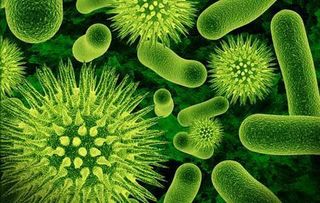New Device Cuts Time to ID Bacterial Infections

A new device can rapidly identify nearly 200 different types of bacteria and yeast known to cause disease in people.
The device, called VITEK MS, is able to identify which particular species of bacteria or yeast is causing an infection in a patient much more quickly than traditional methods that hospital laboratories use, the researchers said.
"We have the name of the pathogen to the physician at least 24 to 48 hours sooner than we would have in the past," study researcher Christine Ginocchio, senior medical director and chief of Infectious Disease Diagnostics at North Shore-Long Island Jewish Health System, told LiveScience.
Rapid identification is important because knowing the species of bacteria or yeast causing an illness helps determine treatment. Some antibiotics work better than others for certain infections, Ginocchio said.
Moreover, if the particular pathogen causing the infection turns out to be one that is resistant to several antibiotics, doctors will know not to use those as treatments, Ginocchio said. [6 Superbugs to Watch Out For]
Cutting down the time needed to find the right treatment will reduce the patients' risk of dying, Ginocchio said.
Rapid identification
Sign up for the Live Science daily newsletter now
Get the world’s most fascinating discoveries delivered straight to your inbox.
The process of identification starts when researchers receive a sample from a sick patient, such as a patient with a urinary tract infection, staph infection or central nervous system infection. Researchers then grow a small amount of the pathogen on a lab dish, which can take around 18 to 24 hours.
Traditionally, researchers would then have to go through several other steps to identify the pathogen, taking about one to three days.
But with the new device, researchers can name the culprit bacterial or yeast species within an hour of growing it, Ginocchio said.
While there are other methods that can quickly identify pathogens, such as polymerase chain reaction (PCR) they are costly, Ginocchio said. A PCR test costs between $50 and $150, whereas a test with the new device costs 20 cents, she said.
How it works
The device uses a technology called matrix-assisted laser desorption/ionization–time of flight mass spectrometry (MALDI-TOF MS).
The process uses a laser to break bacteria and yeast samples down into small particles. The particles travel up a tube, and the speed at which they travel depends on their size. The amount and size of particles will vary depending on a particular bacterial or yeast species. So the device identifies the microbes by looking at this pattern, or "spectra" of particles.
The device does not work for infections caused by viruses.
The method can currently identify some, but not all, types of fungal infections. The researchers are testing a version of the device that can identify microbes present in blood samples, which would help identify pathogens causing sepsis infections, Ginocchio said.
The device, manufactured by bioMerieux, Inc. in Durham, N.C., was approved this week by the Food and Drug Administration.
Follow Rachael Rettner @RachaelRettner. Follow LiveScience @livescience, Facebook & Google+. Original article on LiveScience.

Rachael is a Live Science contributor, and was a former channel editor and senior writer for Live Science between 2010 and 2022. She has a master's degree in journalism from New York University's Science, Health and Environmental Reporting Program. She also holds a B.S. in molecular biology and an M.S. in biology from the University of California, San Diego. Her work has appeared in Scienceline, The Washington Post and Scientific American.
Most Popular

